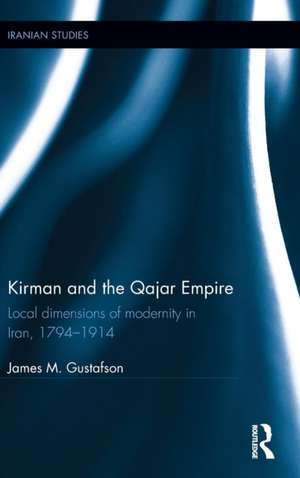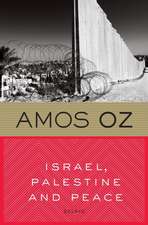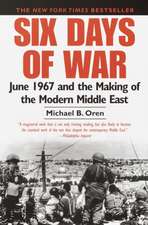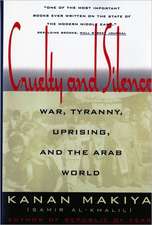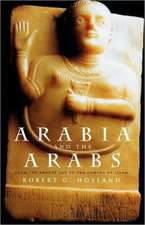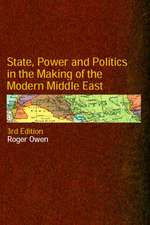Kirman and the Qajar Empire: Local Dimensions of Modernity in Iran, 1794-1914: Iranian Studies
Autor James Gustafsonen Limba Engleză Hardback – 22 iul 2015
Kirman and the Qajar Empire explores how these Kirmani local elites mediated political, economic, and social change in their community during the significant transitional period in Iran’s history, from the rise of the Qajar Empire through to World War I. It departs from the prevailing centre-periphery models of economic integration and Qajar provincial history, engaging with key questions over how Iranians participated in reshaping their communities in the context of imperialism and growing transnational connections. With rarely utilized local historical and geographical writings, as well as a range of narrative and archival sources, this book provides new insight into the impact of household factionalism and estate building over four generations in the Kirman region. As well as offering the first academic monograph on modern Kirman, it is also an important case study in local dimensions of modernity.
This book will be of interest to students and scholars of Iranian studies and Iranian History, as well as general Middle Eastern studies.
| Toate formatele și edițiile | Preț | Express |
|---|---|---|
| Paperback (1) | 389.38 lei 6-8 săpt. | |
| Taylor & Francis – 12 dec 2019 | 389.38 lei 6-8 săpt. | |
| Hardback (1) | 1108.37 lei 6-8 săpt. | |
| Taylor & Francis – 22 iul 2015 | 1108.37 lei 6-8 săpt. |
Din seria Iranian Studies
-
 Preț: 154.25 lei
Preț: 154.25 lei -
 Preț: 310.03 lei
Preț: 310.03 lei - 18%
 Preț: 1053.92 lei
Preț: 1053.92 lei - 25%
 Preț: 823.63 lei
Preț: 823.63 lei - 25%
 Preț: 823.99 lei
Preț: 823.99 lei -
 Preț: 449.41 lei
Preț: 449.41 lei - 18%
 Preț: 1068.18 lei
Preț: 1068.18 lei - 18%
 Preț: 997.90 lei
Preț: 997.90 lei -
 Preț: 389.38 lei
Preț: 389.38 lei - 18%
 Preț: 1055.51 lei
Preț: 1055.51 lei - 12%
 Preț: 299.52 lei
Preț: 299.52 lei -
 Preț: 442.68 lei
Preț: 442.68 lei - 18%
 Preț: 1059.84 lei
Preț: 1059.84 lei - 26%
 Preț: 848.57 lei
Preț: 848.57 lei - 25%
 Preț: 770.09 lei
Preț: 770.09 lei -
 Preț: 341.55 lei
Preț: 341.55 lei - 18%
 Preț: 1165.97 lei
Preț: 1165.97 lei -
 Preț: 437.13 lei
Preț: 437.13 lei - 18%
 Preț: 1168.76 lei
Preț: 1168.76 lei -
 Preț: 436.14 lei
Preț: 436.14 lei - 18%
 Preț: 1117.07 lei
Preț: 1117.07 lei -
 Preț: 478.86 lei
Preț: 478.86 lei - 25%
 Preț: 570.60 lei
Preț: 570.60 lei - 18%
 Preț: 1114.70 lei
Preț: 1114.70 lei - 26%
 Preț: 822.01 lei
Preț: 822.01 lei - 18%
 Preț: 1000.27 lei
Preț: 1000.27 lei - 18%
 Preț: 1060.52 lei
Preț: 1060.52 lei -
 Preț: 412.70 lei
Preț: 412.70 lei - 18%
 Preț: 1054.71 lei
Preț: 1054.71 lei - 22%
 Preț: 328.20 lei
Preț: 328.20 lei -
 Preț: 430.94 lei
Preț: 430.94 lei - 18%
 Preț: 1055.51 lei
Preț: 1055.51 lei - 18%
 Preț: 1002.63 lei
Preț: 1002.63 lei - 25%
 Preț: 685.71 lei
Preț: 685.71 lei - 18%
 Preț: 1067.14 lei
Preț: 1067.14 lei - 18%
 Preț: 1118.65 lei
Preț: 1118.65 lei - 18%
 Preț: 1054.75 lei
Preț: 1054.75 lei
Preț: 1108.37 lei
Preț vechi: 1351.68 lei
-18% Nou
Puncte Express: 1663
Preț estimativ în valută:
212.11€ • 220.19$ • 176.87£
212.11€ • 220.19$ • 176.87£
Carte tipărită la comandă
Livrare economică 22 martie-05 aprilie
Preluare comenzi: 021 569.72.76
Specificații
ISBN-13: 9781138914568
ISBN-10: 1138914568
Pagini: 198
Ilustrații: 9 black & white illustrations, 1 black & white tables, 4 black & white halftones, 5 black & white line drawings
Dimensiuni: 156 x 234 x 15 mm
Greutate: 0.43 kg
Ediția:1
Editura: Taylor & Francis
Colecția Routledge
Seria Iranian Studies
Locul publicării:Oxford, United Kingdom
ISBN-10: 1138914568
Pagini: 198
Ilustrații: 9 black & white illustrations, 1 black & white tables, 4 black & white halftones, 5 black & white line drawings
Dimensiuni: 156 x 234 x 15 mm
Greutate: 0.43 kg
Ediția:1
Editura: Taylor & Francis
Colecția Routledge
Seria Iranian Studies
Locul publicării:Oxford, United Kingdom
Public țintă
Postgraduate and UndergraduateCuprins
Introduction: The Politics of Households in Qajar Kirman Part One: Kirman and the Politics of Empire Chapter I: Kirman and the Qajar Empire Chapter II: Local Historiography and the Politics of the Great Game Part Two: A Regional Political Economy Chapter III: Household Networks and Rural Integration Chapter IV: From Cotton to Carpets: Consolidating a Regional Economy Part Three: Patrimonialism and Social Change Chapter V: Contesting Urban Patrimonialism Chapter VI: The Household Politics of Revolution Conclusion: Mediating Modernity in Kirman
Descriere
Kirman and the Qajar Empire explores how these Kirmani local elites mediated political, economic, and social change in their community during the significant transitional period in Iran’s history, from the rise of the Qajar Empire through to World War I. It departs from the prevailing centre-periphery models of economic integration and Qajar provincial history, engaging with key questions over how Iranians participated in reshaping their communities in the context of imperialism and growing transnational connections. With rarely utilized local historical and geographical writings, as well as a range of narrative and archival sources, this book provides new insight into the impact of household factionalism and estate building over four generations in the Kirman region. As well as offering the first academic monograph on modern Kirman, it is also an important case study in local dimensions of modernity.
